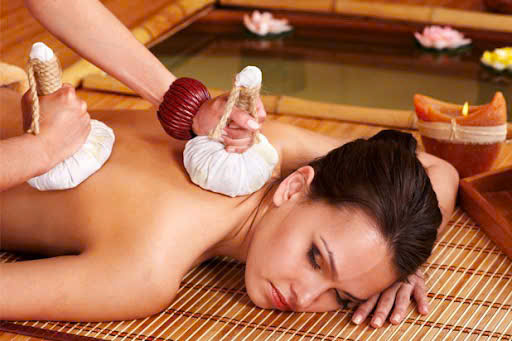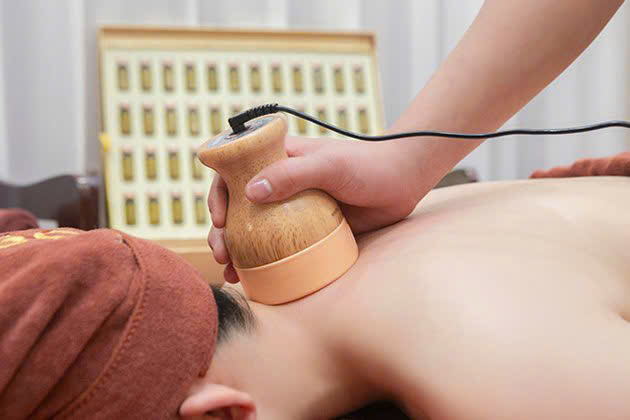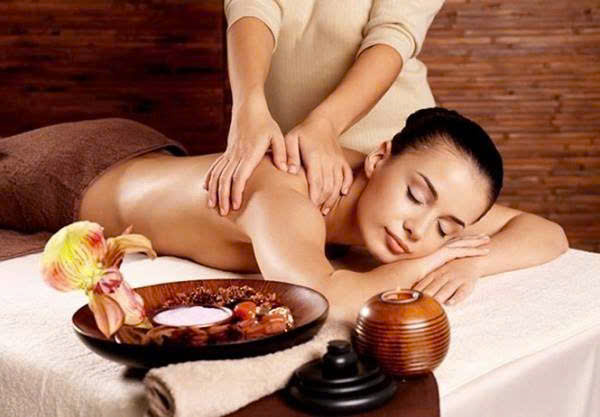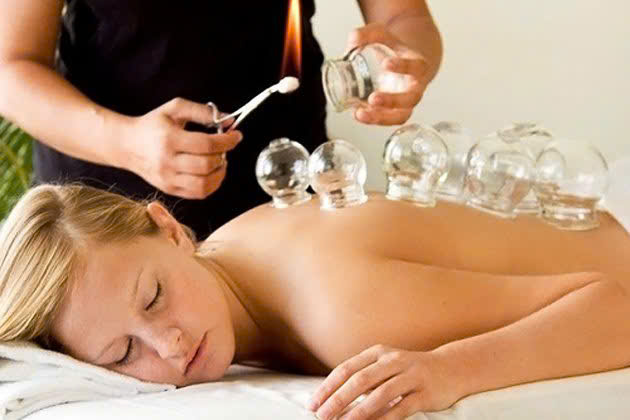Top 10 Chinese Massage Benefits: Relaxation and Healing Techniques
Chinese massage has a deep-rooted history that spans thousands of years, permeating traditional Chinese medicine (TCM) and holistic health practices. Often celebrated for its ability to promote relaxation and facilitate healing, Chinese massage offers a myriad of benefits for both body and mind. This therapeutic art seamlessly combines gentle techniques with scientific principles, making it a popular choice for individuals seeking natural wellness solutions. In this comprehensive guide, we explore the top ten benefits of Chinese massage, delving into the techniques involved, and unveiling how this ancient practice continues to influence modern health practices.

Exploring the Therapeutic Heritage of Chinese Massage
Chinese massage, rooted in the philosophy of balance—particularly the harmony of yin and yang—aims to restore the body’s natural flow of vital energy or qi (chi). Historically, these therapies have been intertwined with acupuncture, herbal medicine, and mindfulness practices, creating a holistic approach to health. The techniques vary from applying pressure along specific meridians to using mobilization, tapping, or stretching methods. By understanding the origins and principles behind Chinese massage, it becomes clear why it remains a cornerstone of traditional Chinese healing arts.
In modern times, Chinese massage is increasingly recognized not just for its relaxation properties but also for its powerful therapeutic benefits. It addresses both the physical and emotional aspects of health, facilitating physical recovery, reducing stress, and enhancing overall well-being. Combining ancient wisdom with contemporary understanding fosters an appreciation for its comprehensive approach, which emphasizes the body’s innate ability to heal itself when guided correctly.
The Interconnection of Movement, Energy, and Healing
The fundamental idea behind Chinese massage is that every part of the body is interconnected through energy pathways called meridians. Blockages or imbalances within these pathways can lead to health issues, pain, or emotional distress. Chinese massage techniques aim to unblock these pathways, allowing energy to flow smoothly and restoring health.
By engaging in these practices, practitioners work to stimulate point-specific responses that influence the entire body’s energetic balance. It is often thought that improving qi flow can prevent illnesses, alleviate pain, and promote mental clarity. This perspective aligns seamlessly with holistic health ideals, emphasizing prevention and harmony rather than merely treating symptoms.

Chinese Massage Techniques: Diverse Approaches for Wellness
The art of Chinese massage encompasses a broad spectrum of techniques, each tailored to different needs, conditions, and body types. These methods can be gentle or vigorous, targeted or broad, depending on the practitioner’s approach and client’s specific concerns. Central to these techniques is the use of hands, sometimes combined with tools, to stimulate muscles, acupuncture points, and meridians.
Understanding these techniques provides insight into why Chinese massage can be so effective across various health issues. It is not a one-size-fits-all approach but rather a personalized system rooted in the philosophy of harmony between body, mind, and energy.
Tui Na: The Pinnacle of Chinese Therapeutic Massage
Tui Na, often considered the core of Chinese therapeutic massage, involves kneading, pressing, rolling, and stretching techniques that target muscles and energy channels. This technique emphasizes deep manipulation aimed at releasing blockages and improving energy flow.
Tui Na is particularly effective in addressing musculoskeletal issues such as back pain, joint stiffness, and chronic muscle tension. It also facilitates internal healing by stimulating acupressure points, which can promote blood circulation and lymphatic drainage. When performed skillfully, Tui Na can be both deeply relaxing and intensely therapeutic, making it a versatile staple in Chinese medicine.
The personalized nature of Tui Na allows practitioners to adapt pressure and techniques to suit each individual’s constitution and condition. Over the centuries, it has been refined to create a sophisticated system that combines manual therapy with an understanding of energetic pathways, resulting in benefits that extend well beyond simple relaxation.
Acupressure and Meridian Stimulation
Acupressure, similar to acupuncture but using finger pressure instead of needles, is another major technique in Chinese massage. It involves pressing specific points along the meridians to unlock energy flow and stimulate the body’s healing processes.
The targeted stimulation of acupressure points can alleviate a range of health issues, from headaches and digestive disturbances to emotional imbalances. Its non-invasive nature makes it accessible and appealing for those hesitant about needles while still offering potent therapeutic benefits. When integrated into a full-body massage, it enhances relaxation, stimulates circulation, and promotes detoxification.
By combining various modalities such as gentle finger tapping, pressing, and circular motion, practitioners can customize treatments that not only address physical ailments but also help clear mental fog, reduce anxiety, and uplift mood. This technique exemplifies how Chinese massage harmonizes physical touch with energetic healing for comprehensive wellness.

Physical and Mental Benefits of Chinese Massage
Chinese massage is renowned for its profound impact on physical health, mental clarity, and emotional stability. Its holistic nature means that improvements are often felt beyond the immediate area being treated, fostering an overall sense of balance and vitality.
This section explores how Chinese massage can be instrumental in managing discomfort, enhancing mental health, and fostering resilience against stress-related ailments.
Pain Relief and Musculoskeletal Health
One of the most immediate and recognizable benefits of Chinese massage is pain relief. Techniques like Tui Na are especially effective in alleviating chronic pain conditions by relaxing tight muscles, reducing inflammation, and increasing blood flow to affected areas. Regular sessions can help diminish the frequency and intensity of pain episodes, providing a natural alternative or complement to pharmaceutical interventions.
Better musculoskeletal health translates into improved daily function and reduced discomfort during movement. For athletes, musicians, or anyone with physically taxing routines, Chinese massage offers a pathway to faster recovery and sustained performance. Its ability to target specific muscle groups and energetic blockages further emphasizes its importance as an integral part of physical wellness routines.
Mental Clarity, Stress Reduction, and Emotional Balance
The mental health benefits extend beyond physical relief. Chinese massage induces deep relaxation, which can help lower cortisol levels—the stress hormone—leading to decreased anxiety and heightened mental clarity. The calming effects are often enhanced through mindfulness and breathing practices incorporated during the massage sessions.
Furthermore, by balancing vital energy, Chinese massage addresses emotional imbalances such as depression, grief, or worry. Many individuals report feeling lighter, more centered, and energized after sessions. This combination of physical and emotional healing underscores Chinese massage’s role as a comprehensive tool for cultivating resilience and mental wellness in today’s fast-paced world.
Enhancing Overall Well-Being with Chinese Massage
The benefits of Chinese massage extend into enhancing overall health and quality of life. Its integrative approach aligns physical, emotional, and energetic aspects, fostering a state of sustained well-being. This section examines how regular practice not only alleviates specific ailments but also promotes longevity and vitality.
Boosting Immune Function and Detoxification
Chinese massage stimulates the lymphatic system, aiding in the removal of toxins and supporting immune function. Techniques such as tapping and gentle pressure can activate lymph flow, which helps clear waste products and bolster the body’s natural defenses.
A robust immune system is vital for maintaining health, especially in a time when immune resilience is at the forefront of health priorities. Regular Chinese massage sessions can serve as a proactive measure to maintain the body’s detox pathways and protect against common illnesses, thereby extending health span and vitality.
Promoting Better Sleep and Reduced Fatigue
Sleep quality is often compromised by stress, tension, and physical discomfort. Chinese massage’s calming touch helps relax nervous system activity, making it easier to fall asleep and enjoy restorative rest. Additionally, by alleviating muscle tension and promoting circulation, it can reduce fatigue caused by physical strain or emotional stress.
People who incorporate Chinese massage into their routine frequently report a significant improvement in sleep patterns and an increase in energy levels during the day. These benefits are critical for maintaining optimal functioning and achieving a balanced, healthy lifestyle.
Conclusion
In conclusion, Chinese massage offers a wealth of benefits that encompass physical relaxation, pain management, emotional balance, and overall health optimization. Its ancient techniques, grounded in balancing energy and promoting harmony within the body, remain highly relevant and effective in contemporary wellness practices. Whether used for targeted therapeutic relief or holistic rejuvenation, Chinese massage embodies a profound understanding of the interconnectedness of body and mind. Embracing this traditional art can be a powerful step towards achieving optimal health, vitality, and emotional resilience in today’s complex world.

The Essence of Traditional Chinese Medicine
Traditional Chinese Medicine (TCM) is a holistic healthcare system that has been practiced for thousands of years. Leveraging a unique understanding of the body and mind, TCM focuses on balance and harmony within a person. This foundational philosophy plays a critical role in shaping practices such as acupuncture, herbal medicine, and especially, Chinese massage.
At the heart of TCM is the concept of Qi (pronounced “chee”), the vital life energy that flows through the body along pathways known as meridians. Chinese massage aims to restore the smooth flow of Qi, helping to promote health by addressing blockages and imbalances. The intricate relationship between physical symptoms and emotional well-being is also recognized, underlining the importance of a comprehensive approach to health in TCM.
Understanding Qi and Its Role in Health
Qi is considered a vital force that sustains life and health. When Qi flows unobstructedly, it fosters vitality. Conversely, blockages or imbalances can lead to various health issues.
In Chinese massage, techniques are specifically designed to manipulate Qi and restore balance. For example, Tui Na practitioners may focus on particular acupressure points and meridian pathways to facilitate the harmonious flow of energy. By enhancing circulation and reducing stagnation, practitioners not only relieve pain but also boost energy levels, offering a dual benefit to their patients.
This complex interplay between Qi and health goes beyond the physical symptoms. TCM posits that emotional states are closely linked to physical health. Stress or emotional turmoil can obstruct Qi, leading to both psychological and physiological problems. Chinese massage thus becomes a therapeutic outlet that not only alleviates physical tension but also promotes emotional stability.
The Diagnostic Approach in Chinese Massage
The practice of Chinese massage is not solely guided by physical ailments; it is heavily influenced by traditional diagnoses. Practitioners evaluate a client’s overall health through various diagnostic methods, including tongue and pulse assessments, to tailor the massage accordingly.
This personalized approach allows practitioners to identify underlying imbalances that may not be immediately evident. For instance, if a patient presents with neck pain but shows signs of a deficiency in Qi, the treatment might focus on invigorating energy flow in the affected area while also addressing overall vitality.
Furthermore, understanding the mind-body connection emphasizes the significance of emotional well-being in physical health. Through diagnosis and the application of tailored massage techniques, Chinese massage transforms from a simple relaxation technique into a multifaceted treatment that embraces the whole individual.
Integrating Mindfulness with Chinese Massage
Another dimension of Chinese massage is its inherent connection to mindfulness practices. The incorporation of breathwork and mindful awareness during sessions not only enhances relaxation but also deepens the therapeutic effect.
Practitioners often encourage clients to engage in breathing techniques that complement the physical manipulation of tissues. By focusing both on their breath and the sensations within their body, clients can enter a relaxed state that facilitates deeper healing.
Breathwork as a Healing Tool
Breathing is a cornerstone of both meditation and Chinese massage. The act of consciously regulating one’s breath can shift attention from external stressors to internal ease, promoting physiological changes associated with relaxation.
When clients consciously take deep, slow breaths, they trigger the parasympathetic nervous system. This reaction counters stress responses, allowing for muscle relaxation and a reduction in heart rate. Many clients find that integrating breathing exercises into their Chinese massage experience significantly amplifies the alleviation of tension and stress.
Moreover, breathwork serves not just as a way to enhance relaxation, but also as a mechanism to heighten awareness of self. This newfound attention helps clients recognize areas of tension and discomfort, creating an opportunity for them to actively participate in their healing journey.
The Role of Mindfulness in Emotional Healing
Mindfulness supports emotional healing by encouraging individuals to be present with their feelings instead of dismissing or suppressing them. For clients dealing with anxiety, depression, or trauma, Chinese massage provides a safe space for emotional release and processing.
As practitioners apply targeted pressure, clients may become aware of associated emotions that have manifested physically, such as tightness or pain. Mindfulness allows them to explore these feelings without judgment, creating pathways to emotional liberation and resilience. Hence, each Chinese massage session becomes a unique integration of mind and body therapy, fostering deeper healing on multiple levels.
Empowering Self-Care through Chinese Massage
Regular Chinese massage sessions empower individuals to take control of their health and wellness. Beyond the immediate benefits, consistent practice fosters long-term changes in how one engages with their body, mind, and emotional states.
Building a Lifestyle of Wellness
Incorporating Chinese massage into one’s routine doesn’t just provide temporary relief; it encourages a lifestyle of proactive wellness. By investing in regular sessions, individuals pave the way for enhanced physical, mental, and emotional health.
This commitment leads to better stress management, improved pain management, and enhanced body awareness. The knowledge acquired through regular treatments allows individuals to recognize early signs of imbalance, leading to timely interventions. This practice of self-care fosters resilience, as individuals become more adept at navigating life’s challenges.
Moreover, understanding that wellness extends beyond the massage table inspires individuals to adopt complementary lifestyle practices such as mindful eating, meditation, and physical activity that resonate with their unique needs.
Cultivating Mind-Body Awareness
Practicing self-care through Chinese massage cultivates a deeper connection to the mind-body relationship. The calming experience helps individuals tune into their physical sensations and emotional states, fostering self-awareness.
As clients begin to understand how their emotions manifest in their bodies, they develop tools to navigate stress, anxiety, and emotional upheaval more effectively. This heightened awareness can lead to significant improvements in daily functioning and overall quality of life.
Furthermore, this journey into self-care encourages individuals to prioritize wellness in their interactions with others and their external environments. Emotional clarity and physical health gained through Chinese massage promote more mindful relationships and a greater sense of community.https://jobedubaispa.com/slimming-massage/
Conclusion
In conclusion, Chinese massage embodies a holistic approach that combines physical techniques with deep emotional and mental care. With roots in Traditional Chinese Medicine, it prioritizes the balance of energy, emotional stability, and physical well-being. By offering personalized treatments that address both physical and emotional imbalances, Chinese massage empowers individuals to embrace a proactive approach to their health, fostering resilience and promoting a vibrant quality of life. As contemporary wellness practices increasingly recognize the importance of the mind-body connection, the relevance and effectiveness of Chinese massage continue to flourish, making it an invaluable asset in modern self-care regimens.https://www.google.com/knowledgegraphshares?client=mobilesearchapp&sca_esv=2485b17250e0dec8&authuser=0&bih=879&biw=428&channel=iss&cs=0&hl=vi&rlz=1MDAPLA_viAE995AE995&v=380.0.788317806&sxsrf=AE3TifNyCsPAC3ZKQyoJ_sJwGbcI_ncd_g:1757078889769&kgmid=/g/11yhlxr9j1&q=Th%C3%A1i+massage-+home+service+for+ladies-downtown+dubai&shndl=30&shem=lsptbl1,shrtsdl&source=sh/x/loc/act/m1/5&kgs
